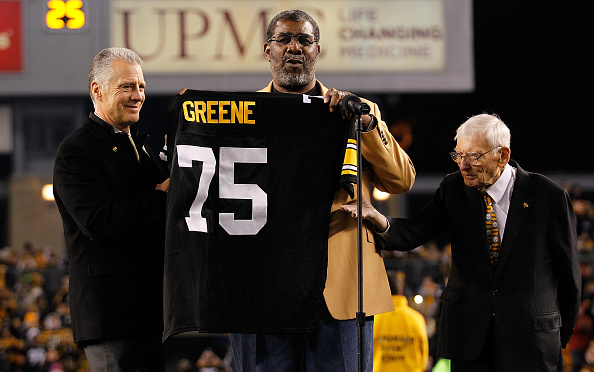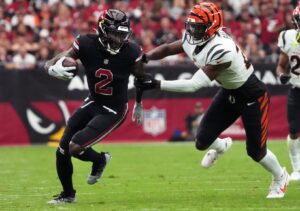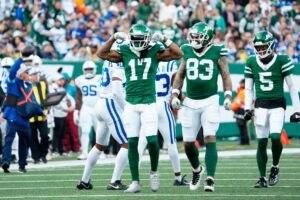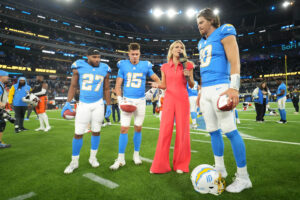Pittsburgh Steelers 1971 Draft: The Foundation for the Dynasty
Much has been written about the Pittsburgh Steelers 1974 draft class, which makes a lot of sense. That draft produced four Hall of Fame selections: Lynn Swann, Jack Lambert, John Stallworth, and Mike Webster. It is no coincidence that the Steelers run of four Lombardi Trophies in six years began that very year.
That championship would not have happened, however, if those future Hall of Famers had not been added to a very solid core of players. Many of them came from the 1971 draft. That is a draff class that does not receive as much attention as it deserves, so let me do my best to briefly rectify that.
The cornerstone of the Steelers dynasty, Joe Greene, had been selected with their first-round pick, #4 overall, in 1969. In 1970 they added two more future Hall of Famers, Terry Bradshaw, that draft’s overall #1, and Mel Blount in the third round. The team’s record improved from 1-13 in 1969 to 5-9 in 1970, but there were still plenty of holes to fill.
READ MORE: AFC North Draft Grades
[pickup_prop id=”24610″]
The Pittsburgh Steelers Draft Braintrust
Before the 1971 draft, Head Coach Chuck Noll shared his vision Art Rooney Jr., who was running the Steelers drafts in those days. Noll told Rooney that he wanted to focus on drafting players “who can think on their feet and have that type of coachability.”
Rooney took that to heart as he worked with Bill Nunn Jr., who was posthumously inducted into the Hall of Fame in 2021, and Jack Butler, a former Steeler great who headed up the Blesto scouting network.
The result was seven players who would start in Super Bowl IX three years later. It was a draft class (all 17 rounds of it) that was loaded with players from HBCUs courtesy of Nunn’s intimate knowledge of those programs. Nunn was a native Pittsburgher. His father had been the managing editor of the Pittsburgh Courier, one of the most influential African American newspapers in the nation. Nunn also spent many years there as a sportswriter. Those connections remained fruitful when he joined the Steelers in 1970 as Assistant Personnel Director.
The Selections
Pittsburgh’s first-round pick in 1971 was WR Frank Lewis out of Grambling. His career did not blossom until he was traded to Buffalo in 1978, but he moved into the Steelers’ starting lineup until he was pushed out by Swann and Stallworth.
The second-round pick in 1971, Jack Ham out of Linebacker U, Penn State, made it three consecutive years that the Steelers’ drafted a Hall of Famer. Ham would make 8 Pro Bowls and be named All-Pro 6 times in his outstanding career.
The fourth round produced two Super Bowl starters, G Gerry (Moon) Mullins from Southern Cal and DE Dwight White out of East Texas State, now Texas A&M-Commerce. White didn’t just start Super Bowl IX, he came out of the hospital after spending much of Super Bowl week there fighting pneumonia and losing nearly 20 pounds. He recorded the Steelers’ first Super Bowl points with a safety on Vikings QB Fran Tarkenton and led the run defense that completely smothered the Vikings.
In the fifth round, the Steelers selected TE Larry Brown from Kansas, where he played with John Riggins. Brown was moved to tackle in 1977 where he earned his only Pro Bowl appearance.
Hidden Gems
In the eighth round, Nunn’s HBCU expertise was tapped again when Pittsburgh selected DT Ernie (Fats-I wouldn’t have had the nerve to call him that) Holmes from Texas Southern. Scouting was still early in its evolution. It had only been a few years since GMs showed up at the draft with Street & Smith’s College Football Yearbook as their guide to select players. In 1970, the Steelers had drafted Blount from Southern University, so Nunn’s insight gave them an important edge over the rest of the league.
Buried in the eleventh round in 1971 was a safety from Western Illinois, Mike Wagner. He would go on to be named to the Pro Bowl twice and anchor the Steelers’ secondary throughout the seventies.
This group has been called the Elite Eight of the draft, but I’ve only mentioned seven names. That’s because Pittsburgh added their eighth Super Bowl IX starter, S Glen Edwards from HBCU Florida A&M after the draft. Despite being left out of the 442 selections in the 1971 draft, Edwards would pair up with Wagner to give Pittsburgh one of the great safety tandems of that era. They both made their two Pro Bowl appearances at the same time, following the 1975 and 1976 seasons.
Experts reflect on the Pittsburgh Steelers 1971 Draft Haul
The 1972 draft was less prolific, but the Steelers did ok with their first-round choice-Ham’s former Penn State teammate Franco Harris. I heard he made a big catch in the playoffs that year. That would make four straight years of drafting at least one Hall of Famer. 1973’s draft beyond first-round choice CB J.T. Thomas was pretty meh, but 1974’s class more than made up for it.
The rest of the league caught up to Pittsburgh’s scouting acumen, and the Steelers selected much later in the draft after they started winning. This resulted in the pipeline of Hall of Famers, and basically very good players, largely drying up. For a franchise built on the draft like no others, they lived by it, then slowly died by it.
But what an amazing run they had, anchored by their haul in 1971. Don’t take my word for it, though. In 2011 The Pittsburgh Post-Gazette commemorated the 40th anniversary of this special draft. They spoke with Baltimore Ravens GM at the time Ozzie Newsome and longtime NFL GM Ernie Accorsi about their opinions of the Steelers’ 1971 draft.
Newsome- “You can talk strongly about the ’71 draft being as good as their ’74 draft.”
Accorsi-“That’s 71 draft…that is the draft that made them competitive. I know they had Terry Bradshaw and Mean Joe Greene, but that’s the one where they turned the corner, in my opinion.”
Around that corner were four Super Bowl championships, one of the greatest runs in NFL history, anchored by Two of the greatest drafts.
READ MORE: The Extraordinary History of the Pittsburgh Steelers Logo
Main Photo:
Embed from Getty Images






